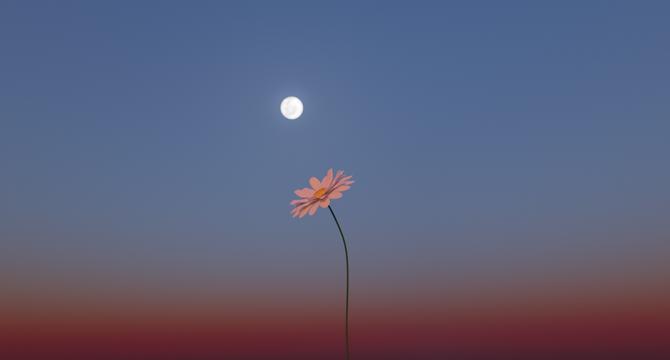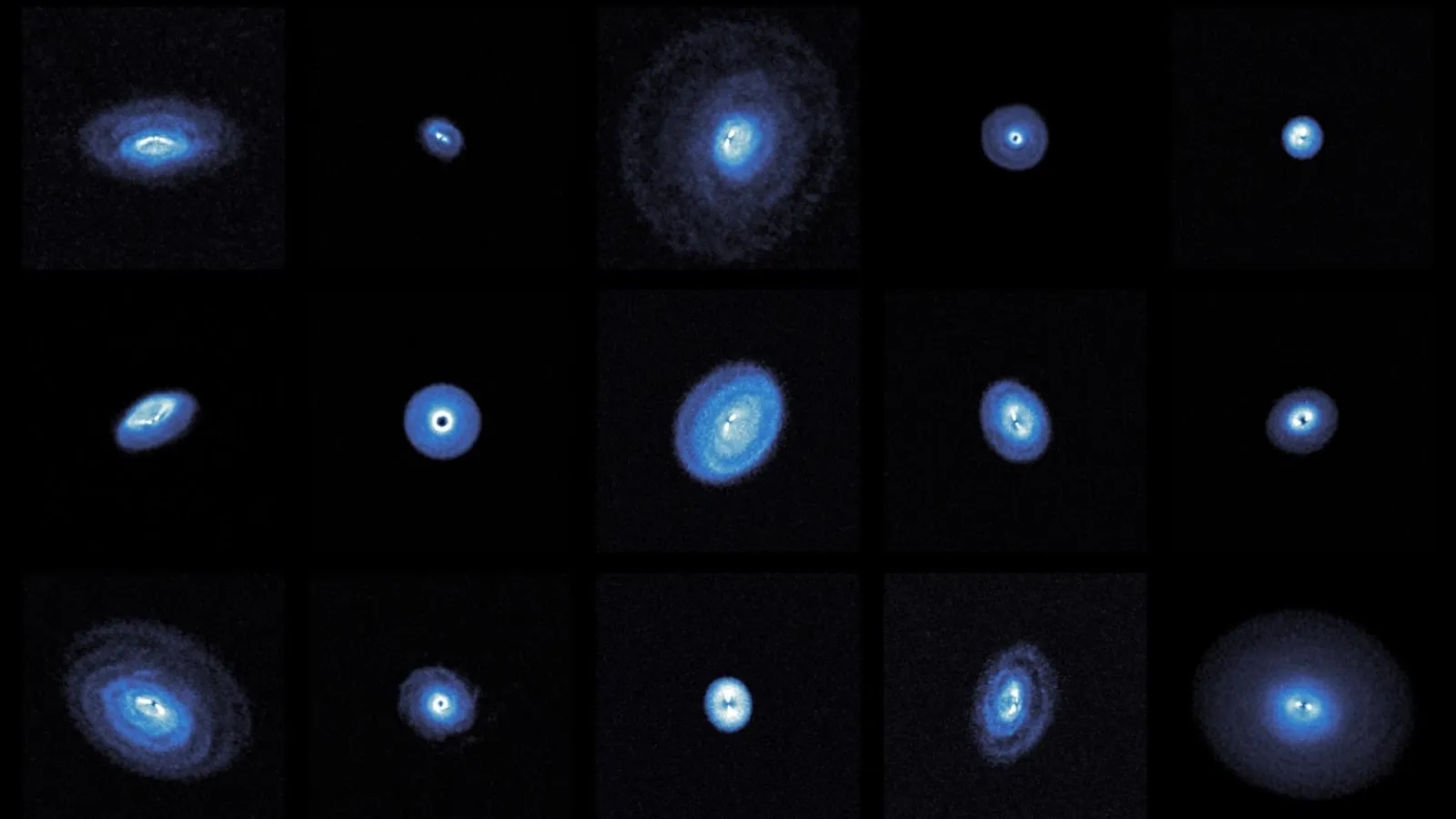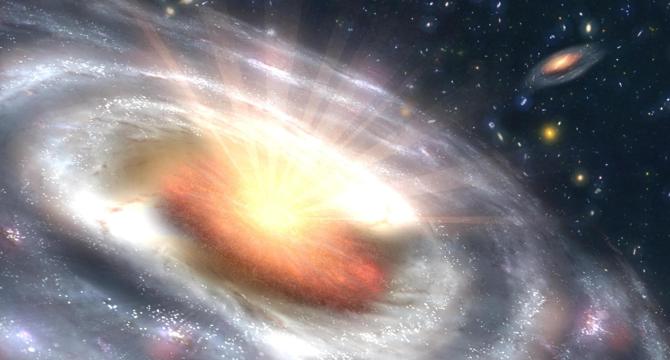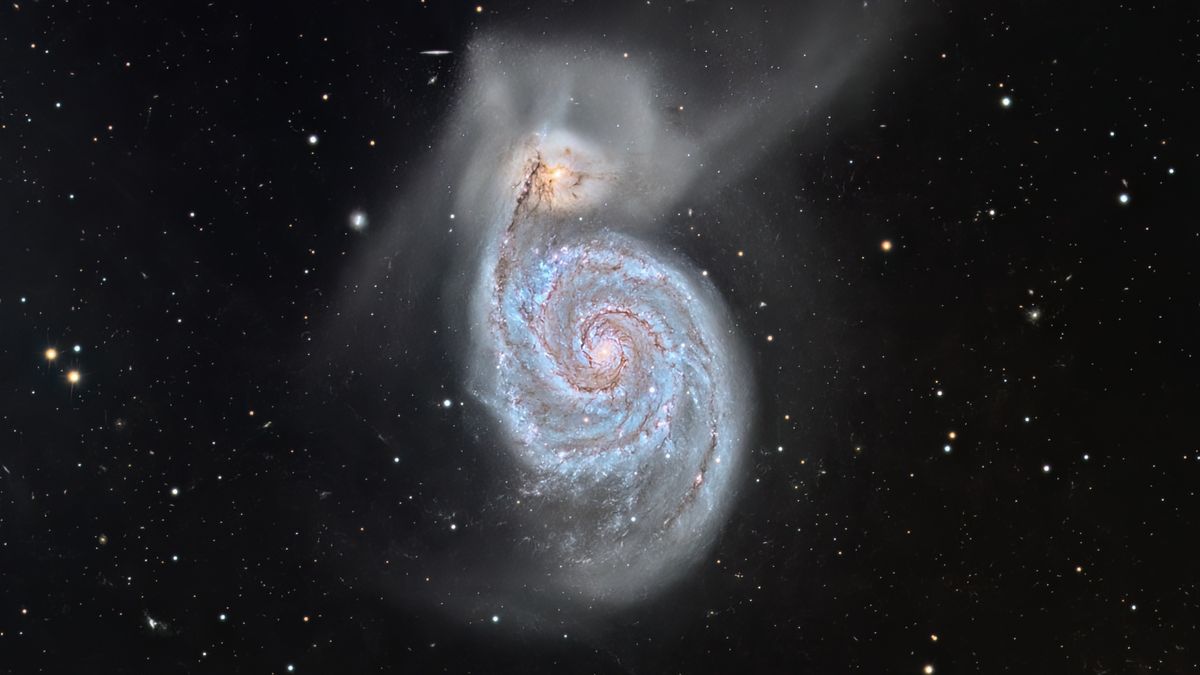Space News
Nasa
89

Image Credit: Nasa
Sols 4527-4528: ‘Boxwork Ahoy!’
- Curiosity rover captured images of boxwork structures on Mars, showing smoother terrain criss-crossed by ridges.
- On Sol 4527, Curiosity conducted various activities including analyzing the target 'Tamarack Valley' and capturing images of boxwork structures using Mastcam and ChemCam instruments.
- The plan for Sol 4527 also included driving the rover closer to the boxwork structures for further exploration.
- On Sol 4528, Curiosity focused on capturing Navcam dust-devil and horizon movies, along with conducting science experiments at a new location.
Read Full Article
5 Likes
Brighter Side of News
388

Image Credit: Brighter Side of News
New discovery upends current models of star and planet formation
- A recent study led by Paolo Padoan challenges traditional models of star and planet formation, suggesting that protoplanetary disks grow actively by gathering material from their surroundings even after the star ignites.
- The study proposes that Bondi-Hoyle accretion allows young stars to continually gather gas and dust, reshaping and expanding their disks over time.
- This new perspective emphasizes the role of the surrounding environment in shaping star systems and explains discrepancies between previous models and observations.
- Turbulent gas dynamics in space play a significant role in supplying the necessary angular momentum to protoplanetary disks, enabling them to expand and evolve as seen in young stellar systems.
- Density fluctuations in turbulent gas increase the angular momentum delivered to a star's disk, contributing to the growth and longevity of the disk.
- The updated model helps resolve longstanding mysteries in astronomy, such as the size, longevity, and structural complexities of protoplanetary disks as observed in various star systems.
- Bondi-Hoyle accretion offers a more accurate explanation for the observed features of protoplanetary disks, including their size, mass, and spin dynamics.
- Understanding the growth of protoplanetary disks not only advances knowledge about star formation but also influences the search for habitable planets and the conditions for life in the universe.
- By combining high-resolution observations with advanced simulations, astronomers are gaining new insights into the interconnected processes of star and planet formation.
- The study highlights the continuous influence of the environment on the evolution of star systems and emphasizes the importance of studying the birthplaces of stars for understanding planetary formation.
Read Full Article
23 Likes
Brighter Side of News
214

Image Credit: Brighter Side of News
Groundbreaking hypergravity facility could revolutionize our understanding of time and space
- A cutting-edge hypergravity facility named CHIEF in Hangzhou, China, is set to revolutionize scientific research with over $286.6 million in funding.
- CHIEF aims to explore extreme gravity conditions beyond Earth's gravity through powerful centrifuges.
- The facility will house 3 large centrifuges and 18 mobile experiment units to simulate unique stress conditions for research.
- CHIEF offers interdisciplinary applications in seismic geotechnics, deep-sea research, geological modeling, and advanced material design.
- Researchers at CHIEF will study natural gas hydrates, enhancing energy sustainability and environmental protection.
- The facility's advanced technology allows for experiments at up to 1,900 g-t, surpassing other hypergravity centers globally.
- CHIEF's supergravity geotechnical high-speed centrifuge will support major engineering technologies and cutting-edge sciences.
- The project symbolizes China's commitment to scientific advancement and expansion of technological frontiers.
- Professor Chen Yunmin, a key figure in the project, highlighted CHIEF's ability to simulate extreme environments and solve complex physics problems.
- CHIEF's role in shaping future research in energy, materials science, and environmental engineering positions it as a global leader in hypergravity technology.
Read Full Article
12 Likes
TechCrunch
178

Image Credit: TechCrunch
Residents of SpaceX’s Starbase launch site vote to incorporate as a city
- Residents around SpaceX's Starbase launch site in southern Texas voted to incorporate as a city named Starbase with overwhelming support.
- Majority of the new city's residents are believed to be SpaceX employees, with three current and former employees elected to serve as mayor and commissioners.
- SpaceX aims to manage roads, utilities, schooling, medical care, and gain authority to close the nearby Boca Chica beach and state park for launches.
- Elon Musk had announced the move of SpaceX's headquarters from California to the Starbase facility in Texas, citing reasons like safety concerns and regulatory issues.
Read Full Article
10 Likes
Discover more
Livescience
388

Image Credit: Livescience
May's full 'Flower Moon' will be a micromoon. Here's how to watch it rise.
- The full Flower Moon will appear in the sky on Monday (May 12), known as a 'micromoon' due to its somewhat smaller size.
- This micromoon phenomenon occurs when the moon is farthest from Earth in its elliptical orbit, creating an apogee full moon, which is set to happen at 12:56 p.m. EDT.
- To observe the full moon at its best, check moonrise and moonset times for your location, find a spot with a clear eastern horizon view, and enjoy the moon illusion where it appears larger near the horizon.
- Named after the blooming flowers in spring, the full moon also goes by several other names like Sucker Moon, Milk Moon, Mothers' Moon, Bright Moon, Hare Moon, and Grass Moon, with the next full moon being the Strawberry Moon on June 11.
Read Full Article
23 Likes
The Verge
433

Image Credit: The Verge
Elon Musk’s SpaceX gets a company town in Texas
- Residents near Boca Chica Beach in Texas have voted to become a city called Starbase, near SpaceX's launch site.
- The new city will be located in Texas' Cameron County and predominantly consists of SpaceX employees.
- Elon Musk declared victory as Starbase officially becomes a city, allowing SpaceX more control over the launch site.
- Legislation in Texas could further empower SpaceX in controlling beach closures for launches, while federal oversight over SpaceX is appearing to diminish.
Read Full Article
26 Likes
Livescience
4

Image Credit: Livescience
These are the sharpest images yet of planets being born around distant stars
- Astronomers captured sharp and detailed images of young solar systems where planets are forming.
- The images reveal early stages of planet formation in over a dozen star systems and provide insights into the materials and processes involved.
- The data could help improve models of planetary formation, understand planet evolution, and compare young solar systems with mature exoplanets.
- The images were obtained using advanced techniques with ALMA, showing swirling structures in protoplanetary disks and signs of planet formation.
Read Full Article
Like
Knowridge
254

Image Credit: Knowridge
Scientists detect strongest clues yet of alien life on a distant planet
- Astronomers using the James Webb Space Telescope have found chemical hints in the atmosphere of the distant planet K2-18b that may be linked to biological activity.
- The presence of dimethyl sulfide (DMS) and dimethyl disulfide (DMDS) on the planet, which are molecules produced by living organisms on Earth, has raised speculation about possible alien life.
- Scientists have reached a 'three-sigma' certainty level in detecting these molecules, indicating a 0.3% chance of it being a fluke, but they aim for a more definitive 'five-sigma' level for confirmation.
- Further observations with JWST could provide more clarity, as K2-18b is a 'Hycean' planet with a hydrogen-rich atmosphere that might harbor these sulfur-based gases indicative of life.
Read Full Article
15 Likes
Livescience
397

Image Credit: Livescience
Space photo of the week: Record-breaking James Webb telescope image captures 1,678 galaxy groups at once
- NASA's James Webb Space Telescope captured an image of 1,678 galaxy groups in the constellation Sextans, located 12 billion light-years away.
- The galaxy groups date back to the early universe, providing insights into the universe's history over the past 12 billion years.
- The discovery helps astronomers understand the evolution of galaxies from irregular shapes with abundant star formation to more structured elliptical and spiral galaxies like the Milky Way.
- The telescope's image helps study galaxy interactions, galaxy structure, dark matter, supermassive black holes, and intergalactic gas, advancing our knowledge of the cosmos.
Read Full Article
23 Likes
Earthsky
379

Image Credit: Earthsky
A change of tune: Birdsong evolves, says AI-powered study
- Birdsong evolves over time due to migration and aging in bird populations, a study by the University of Oxford reveals.
- Researchers used AI to analyze great tit birdsongs, finding that songs are shared, remain local, or are upheld by older birds' memories.
- The study, published in Current Biology, confirms long-theorized notions of bird song evolution.
- Data collected in Wytham Woods over three years showed age influences song similarity, and migration slows song evolution.
- Older birds act as musical archives, preserving outdated tunes, while younger birds introduce and adapt to new songs rapidly.
- The study highlights how demographic changes in bird populations shape their distinctive song cultures over time.
- The findings could aid conservation efforts by monitoring bird community changes through birdsong variations.
- The researchers have shared their dataset to encourage further exploration in this field of study.
- This study sheds light on the dynamic evolution of bird songs, emphasizing the impact of demographic factors like aging and migration.
Read Full Article
22 Likes
Knowridge
438

Image Credit: Knowridge
Spinning star may have cracked a giant galactic “bone”
- Astronomers using Chandra X-ray Observatory and radio telescopes have likely solved the mystery of a break in a massive structure near the center of Milky Way.
- The structure, named G359.13, resembles a snake and is one of the largest and brightest 'bones' in the Milky Way, made of energized particles guided by magnetic fields.
- New images suggest that a collision, likely involving a pulsar, caused the break in G359.13, distorting its magnetic field and warping the radio waves detected.
- The discovery sheds light on the extreme objects like pulsars and their impact on the environment near the center of our galaxy, helping scientists to understand this wild region better.
Read Full Article
26 Likes
The Verge
223

Image Credit: The Verge
Trump’s 2026 NASA budget would slash ISS crew and allocate more money for Elon
- The Trump administration's proposed NASA budget for 2026 includes cutting a quarter of the budget, reducing ISS crew sizes, and focusing on Mars missions.
- The budget proposal allocates more funding for Elon Musk's SpaceX and prioritizes human missions to Mars over other space science missions.
- It cuts funding for ISS, space science missions, Mars Sample Return mission, and other programs, while offering $1 billion for Mars-focused programs without specific details.
- The proposal also includes allocations for lunar exploration, cuts in earth sciences and climate-focused programs, signaling a shift in NASA's priorities according to critics.
Read Full Article
13 Likes
Livescience
58

Image Credit: Livescience
Physicists create 'black hole bomb' for first time on Earth, validating decades-old theory
- Physicists have created a 'black hole bomb' in the lab for the first time.
- Theoretical phenomenon described by physicists in 1972, involves amplifying waves emanating from a rotating black hole.
- Researchers from various institutes experimentally verified the black hole bomb, aiding in better understanding of black hole spin.
- The experiment used the Zel'dovich effect to amplify waves, demonstrating transition to instability and spontaneous wave generation.
Read Full Article
3 Likes
Medium
129

Once upon a time in a small village, there lived a young girl named Emma.
- A young girl named Emma found a hidden letter from William addressed to her grandmother.
- Emma discovered that William was her grandmother's true love who never returned from war.
- The letter symbolized the power of memories and the impact of the past on the present.
- Emma decided to live her life without regrets and treasure the memories of her ancestors.
Read Full Article
7 Likes
Livescience
295

Image Credit: Livescience
Amateur astronomer captures detailed photos of Croc's Eye and Whirlpool galaxies from backyard observatory
- Vermont-based astrophotographer Michele Hernandez Bayliss captures detailed photos of Messier 94 (Croc's Eye galaxy) and the Whirlpool galaxy (M 51) using advanced telescopes and filters.
- Hernandez Bayliss spent 20 hours capturing images of the Croc's Eye galaxy, tackling challenges such as processing and bright cores to create a stunning view of the spiral galaxy located 34 million light-years away.
- She used RGB and hydrogen-alpha filters over 16 hours to capture the fine structural details of the Whirlpool galaxy, showcasing its prominent spiral arms and interactions with galaxy NGC 5195.
- These images depict intricate features of the galaxies that amateur astronomer Hernandez Bayliss meticulously captured, showcasing her passion for astrophotography and dedication towards observing celestial phenomena.
Read Full Article
17 Likes
For uninterrupted reading, download the app